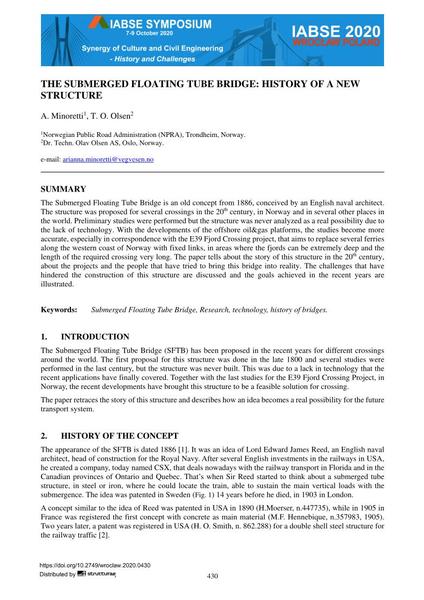The Submerged Floating Tube Bridge: History of a new Structure

|
|
|||||||||||
Détails bibliographiques
| Auteur(s): |
A. Minoretti
T. O. Olsen |
||||
|---|---|---|---|---|---|
| Médium: | papier de conférence | ||||
| Langue(s): | anglais | ||||
| Conférence: | IABSE Symposium: Synergy of Culture and Civil Engineering – History and Challenges, Wrocław, Poland, 7-9 October 2020 | ||||
| Publié dans: | IABSE Symposium Wroclaw 2020 | ||||
|
|||||
| Page(s): | 430-437 | ||||
| Nombre total de pages (du PDF): | 8 | ||||
| Année: | 2020 | ||||
| DOI: | 10.2749/wroclaw.2020.0430 | ||||
| Abstrait: |
The Submerged Floating Tube Bridge is an old concept from 1886, conceived by an English naval architect. The structure was proposed for several crossings in the 20th century, in Norway and in several other places in the world. Preliminary studies were performed but the structure was never analyzed as a real possibility due to the lack of technology. With the developments of the offshore oil&gas platforms, the studies become more accurate, especially in correspondence with the E39 Fjord Crossing project, that aims to replace several ferries along the western coast of Norway with fixed links, in areas where the fjords can be extremely deep and the length of the required crossing very long. The paper tells about the story of this structure in the 20th century, about the projects and the people that have tried to bring this bridge into reality. The challenges that have hindered the construction of this structure are discussed and the goals achieved in the recent years are illustrated. |
||||

